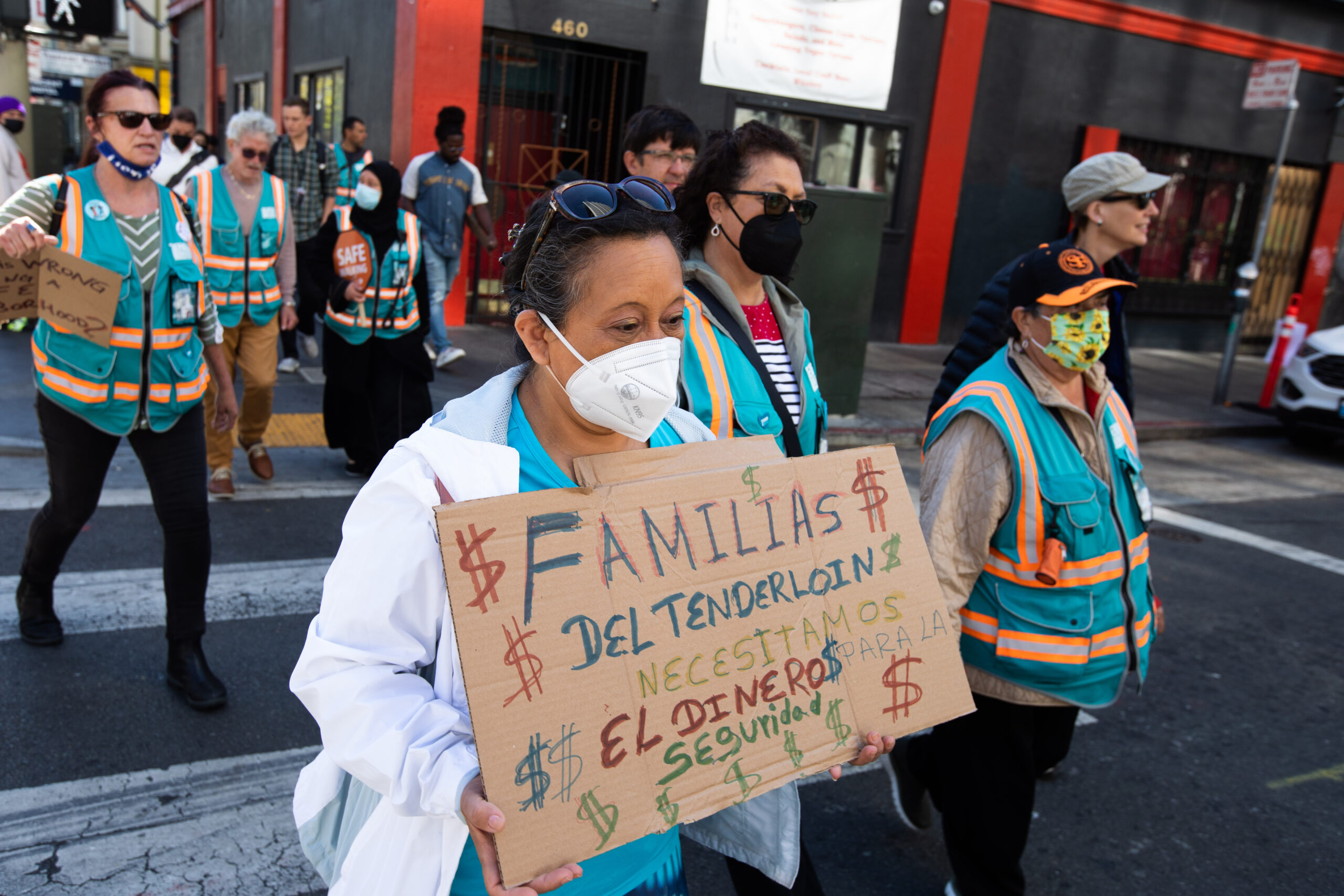The Tenderloin emergency shifted into the hands of the Planning Department on Thursday, signaling the city’s shift away from a crisis effort—and, some residents fear, a return to the status quo.
As a result, Tenderloin residents are facing a reality that they need to keep City Hall’s sustained attention to see long-term improvements. Many of them marched to City Hall’s steps last Friday to protest proposed cuts to ambassador programs during recent budget deliberations. Meanwhile, a coalition of neighborhood groups is working with the Planning Department to develop a long term approach that’s focused on showcasing the arts and diversity of the neighborhood.
Curtis Bradford, an organizer for the Tenderloin People’s Congress, said that the city needs to consider more carefully what success entails in light of the neighborhood's intractable issues.
Bradford said that the emergency order, which Mayor London Breed declared in December, has led to cleaner streets and more collaboration between city departments. But he pointed to the city’s initial goals for the neighborhood, which included fewer encampments on the street and less open-air drug dealing, both of which, he argued, as immediate concerns versus long term solutions for a neighborhood that has long struggled with drugs and poverty.
While the number of tents in the Tenderloin has decreased under the emergency ordinance, tents citywide are higher than they were before—reflecting a sense among some residents that the mayor’s Tenderloin emergency merely shifted problems around. Meanwhile, despite being the only neighborhood with a police station that is overstaffed and officers logging kilos in monthly fentanyl seizures, the Tenderloin continues to experience the highest rate of fatal drug overdoses in the city.
“When we're talking about long term solutions, we really need to think about outcomes,” Bradford said. “Are people actually getting connected to mental health services and to treatment? Is there a decrease in people standing in lines for meals?”
The Tenderloin Center, which was meant to be a centerpiece of Breed’s emergency ordinance, served as a respite but largely struggled to connect people to addiction treatment. Yet with the center set to close at the end of this year, many are wondering what services will come in its place.
After Mayor London Breed declared the emergency, city supervisors gathered for a 10-hour-meeting at which most policymakers agreed that the Tenderloin deserved an influx of resources. Residents grew alarmed during the city’s budget process when supervisors, who had supported the emergency ordinance, weighed cutting funding for the neighborhood’s ambassador programs.
“The families are still here. We don’t have the money to move out of the Tenderloin,” said Norma Carrera, a 26-year Tenderloin resident, during the march to City Hall on Friday. “People sell drugs in these communities and that’s okay? How will we survive?”
Leadership in the neighborhood has also changed hands in recent months as former District 6 Supervisor Matt Haney headed to the state assembly and District 5 Supervisor Dean Preston took over the neighborhood as a result of the city’s redistricting process.
Preston, an ardent critic of police and one of the two dissenting votes for the emergency ordinance, took over in a neighborhood where many residents have called for more police to tamp down on open air drug dealing. Several people who attended the march to City Hall said that, thus far, they felt he was doing his best to show up for the neighborhood.
In an emailed statement, a representative from the Planning Department said that they are still in the process of figuring out how they will track success in the neighborhood. Bradford said that he hopes they will work with residents in creating more green spaces, cultural hubs and longer signal times for increased pedestrian accessibility.
“When a crisis like the pandemic happens communities like the Tenderloin suffer the most,” Bradford said. “We’ve seen some real improvements in the last six months and hopefully we can continue to build on those successes.”
